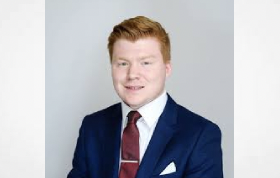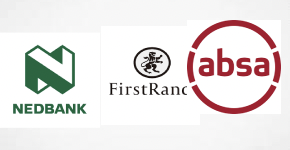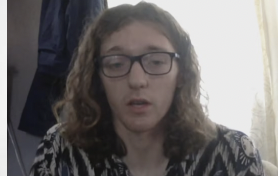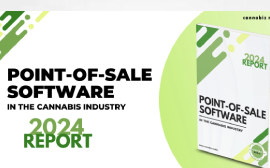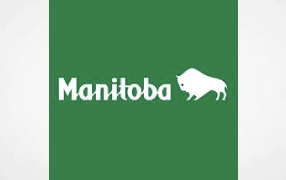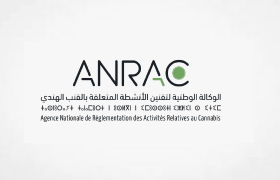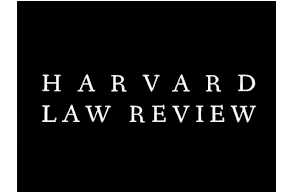20 February 2022
In the past two decades, pioneering research has rekindled interest in the therapeutic use of psychedelic substances such as psilocybin, ibogaine, and dimethyltryptamine (DMT). Indigenous communities have used them for centuries, and researchers studied them in the 1950s and ‘60s. However, most psychedelics were banned in the ‘70s, when President Nixon launched the U.S. war on drugs. Fifty years later, rising rates of mental illness, substance use, and suicide are prompting researchers to revisit psychedelics, and some have gained permission to study them in limited quantities. Clinical trials are producing promising results, creating enthusiasm for commercializing and patenting psychedelics.
This Essay analyzes the ethical, legal, and social implications of patenting these controversial substances. Patents on psychedelics raise unique concerns associated with their unusual qualities, history, and regulation. Because they were criminalized for decades, the U.S. Patent and Trademark Office (PTO) lacks personnel with expertise in the field, rendering more questionable the quality of its evaluation of psychedelic patents. Moreover, because Indigenous communities pioneered many aspects of modern psychedelic therapies, their patenting by Western corporations may promote biopiracy, the exploitation of Indigenous knowledge without compensation. Importantly, control of psychedelics by a small number of companies may stifle innovation and reduce access to these therapies. The Essay presents proposals to reduce the risk of biopiracy and the issuance of unwarranted psychedelic patents. Potential solutions include the implementation of psychedelic patent pledges, the creation of psychedelic prior art repositories, and the tightening of patentability requirements for novel drug therapies. The Essay concludes that ultimately, due to their importance to the advancement of science and public health, it may be appropriate to view psychedelics as tools of scientific discovery, eligible only for limited patent protection.
INTRODUCTION
In the past few decades, pioneering researchers rekindled interest in the therapeutic use of psychedelic substances. This controversial class of compounds includes psilocybin, dimethyltryptamine (DMT), ibogaine, ketamine, and 3,4-methylenedioxymethamphetamine (MDMA).1×1. Mason Marks, Controlled Substance Regulation for the COVID-19 Mental Health Crisis, 72 ADMIN. L. REV. 649, 654 (2020).
Known for their potential to promote feelings of well-being and connectedness, many psychedelics have been used for centuries by Indigenous communities around the world.2×2. See David B. Yaden & Roland R. Griffiths, The Subjective Effects of Psychedelics Are Necessary for Their Enduring Therapeutic Effects, 4 ACS PHARMACOLOGY & TRANSLATIONAL SCI. 568, 569 (2021) (describing the historical use of psychedelics and the use of validated psychological instruments to measure their subjective effects, which include feelings of unity or connectedness, feelings of reverence, altered perception of space and time, and feelings of love or peace). Ketamine, and a closely related compound called esketamine, are not considered classic psychedelics and some experts put them in another class, the dissociative anesthetics. See Rachel Quibell et al., Ketamine, 41 J. PAIN & SYMPTOM MGMT. 640, 640 (2011). However, we consider them psychedelics because they have the hallmarks of this class, including the ability to induce mystical experiences, treat depression, and, according to accumulating evidence, induce neuroplasticity. Simon Makin, Behind the Buzz: How Ketamine Changes the Depressed Patient’s Brain, SCI. AM. (Apr. 12, 2019), https://www.scientificamerican.com/article/behind-the-buzz-how-ketamine-changes-the-depressed-patients-brain [https://perma.cc/D2RT-23RX]. Mental health professionals experimented with them as therapeutic aids during the 1950s and ‘60s.3×3. See Marks, supra note 1, at 666–67 (describing clinical experiments with psychedelics during the 1950s and ‘60s, which were often reported as safe and useful to the therapeutic process). However, most common psychedelics were banned in the ‘70s when Congress passed the Controlled Substances Act4×4. 21 U.S.C. §§ 801–904. and President Nixon launched the U.S. war on drugs.5×5. See Marks, supra note 1, at 667–68 (explaining how in the 1960s, psychedelics became associated with the countercultural movement and opposition to the Vietnam War, which led to passage of the Controlled Substances Act and the prohibition of most psychedelics in the 1970s).
Except for ketamine, an essential medicine used in anesthesia,6×6. Quibell et al., supra note 2, at 640. and MDMA, which was not banned until 1985,7×7. See U.S. Will Ban “Ecstasy,” A Hallucinogenic Drug, N.Y. TIMES, June 1, 1985, at 6. the psychedelics were classified as Schedule I controlled substances.8×8. See Controlled Substances Act, 21 U.S.C. § 812(c) (classifying twenty-eight “hallucinogenic substances” under Schedule I, including DMT, psilocybin, and ibogaine). According to the Drug Enforcement Administration (DEA), Schedule I drugs have “no currently accepted medical use in the United States, a lack of accepted safety for use under medical supervision, and a high potential for abuse.”9×9. Controlled Substance Schedules, DRUG ENF’T ADMIN., https://www.deadiversion.usdoj.gov/schedules/index.html [https://perma.cc/CZD3-K2Y3] (defining DEA criteria for categorization in Schedule I and listing psychedelic examples such as lysergic acid diethylamide (LSD), peyote, and MDMA). However, a growing body of clinical research casts doubt on this categorization, and psychedelics show promise for mitigating several public health crises, including the drug overdose epidemic, post-traumatic stress disorder (PTSD) in veterans, and rising rates of suicide.10×10. See, e.g., Jennifer M. Mitchell et al., MDMA-Assisted Therapy for Severe PTSD: A Randomized, Double-Blind, Placebo-Controlled Phase 3 Study, 27 NATURE MED. 1025, 1026 (2021) (reporting significant improvement of PTSD symptoms following treatment with MDMA in clinical trial); see also Alec J. Divito & Robert F. Leger, Psychedelics as an Emerging Novel Intervention in the Treatment of Substance Use Disorder: A Review, 47 MOLECULAR BIOLOGY REP. 9791, 9796–97 (2020) (describing the use of psychedelics for treating problematic substance, alcohol, and tobacco use); Matthew W. Johnson & Roland R. Griffiths, Potential Therapeutic Effects of Psilocybin, 14 NEUROTHERAPEUTICS 734, 735–36 (2017) (describing the therapeutic benefits of psilocybin therapy for cancer-related anxiety and depression).
The therapeutic potential of psychedelics has triggered an explosion of discussion on popular media, including outlets like the New York Times, 60 Minutes, and Scientific American.11×11. See, e.g., MICHAEL POLLAN, HOW TO CHANGE YOUR MIND: WHAT THE NEW SCIENCE OF PSYCHEDELICS TEACHES US ABOUT CONSCIOUSNESS, DYING, ADDICTION, DEPRESSION, AND TRANSCENDENCE (2018); Andrew Jacobs, The Psychedelic Revolution Is Coming. Psychiatry May Never Be the Same, N.Y. TIMES (Nov. 11, 2021), https://www.nytimes.com/2021/05/09/health/psychedelics-mdma-psilocybin-molly-mental-health.html [https://perma.cc/LGV5-5SWV]; Danielle Schlosser & Thomas R. Insel, A Renaissance for Psychedelics Could Fill a Long-Standing Treatment Gap for Psychiatric Disorders, SCI. AM. (Sept. 14, 2021), https://www.scientificamerican.com/article/a-renaissance-for-psychedelics-could-fill-a-long-standing-treatment-gap-for-psychiatric-disorders [https://perma.cc/33RW-YTV6]; 60 Minutes, Cancer Patient Overcomes Anxiety About Death with Psychedelics, YOUTUBE (Oct. 10, 2019), https://www.youtube.com/watch?v=lqnPVZUzDPc [https://perma.cc/AVA7-DFF8]. Popular coverage of psychedelics research has reinforced public interest in the medical and nonmedical use of these substances.
In the medical context, two psychedelics are making their way through the Food and Drug Administration (FDA) approval pipeline. In 2017, the FDA designated MDMA a breakthrough therapy for PTSD.12×12. Allison A. Feduccia et al., Breakthrough for Trauma Treatment: Safety and Efficacy of MDMA-Assisted Psychotherapy Compared to Paroxetine and Sertraline, 10 FRONTIERS PSYCHIATRY 1, 2 (2019). In 2018 and 2019, the agency identified psilocybin as a breakthrough therapy for treatment-resistant depression and major depressive disorder.13×13. Rachel Feltman, The FDA Is Fast-Tracking a Second Psilocybin Drug to Treat Depression, POPULAR SCI. (Nov. 26, 2019, 4:07 PM), https://www.popsci.com/story/health/psilocybin-magic-mushroom-fda-breakthrough-depression [https://perma.cc/KEP9-DF6U]. In 2019, the FDA designated esketamine, a variation of anesthetic ketamine, a breakthrough therapy for treatment-resistant depression.14×14. Press Release, FDA, FDA Approves New Nasal Spray Medication for Treatment-Resistant Depression; Available Only at a Certified Doctor’s Office or Clinic (Mar. 5, 2019), https://www.fda.gov/news-events/press-announcements/fda-approves-new-nasal-spray-medication-treatment-resistant-depression-available-only-certified [https://perma.cc/FS4Z-T5ZK]. These breakthrough therapy designations indicate that psychedelics may represent significant advancements over existing treatments for mental illness, such as selective serotonin reuptake inhibitors (SSRIs) like fluoxetine and paroxetine.15×15. See Marks, supra note 1, at 694. In 2021, the results of two landmark Phase 2 clinical trials indicated that psilocybin can effectively reduce symptoms of moderate-to-severe and treatment-resistant depression.16×16. See Robin Carhart-Harris et al., Trial of Psilocybin Versus Escitalopram for Depression, 384 NEW ENG. J. MED. 1402, 1402, 1408 (2021) (reporting that two doses of psilocybin spaced three weeks apart treated depression as effectively as six weeks of daily escitalopram, an SSRI); see also Olivia Goldhill, Largest Psilocybin Trial Finds the Psychedelic Is Effective in Treating Serious Depression, STAT (Nov. 9, 2021), https://www.statnews.com/2021/11/09/largest-psilocybin-trial-finds-psychedelic-effective-treating-serious-depression [https://perma.cc/74JV-SB5Q]. Due to these studies and other impressive results, investment in psychedelics research and commercialization is rising.17×17. See, e.g., Jacobs, supra note 11 (describing the rush to invest in research on psychedelics and the companies raising hundreds of millions of dollars to commercialize them). Indeed, some predict the value of the U.S. psychedelics market will reach $10.75 billion by 2027.18×18. Psychedelic Drugs Market Size Is Predicted to Reach $10.75 Billion by 2027, PR NEWSWIRE (Apr. 21, 2021, 9:00 AM), https://www.prnewswire.com/news-releases/psychedelic-drugs-market-size-is-projected-to-reach-10-75-billion-by-2027–301273405.html [https://perma.cc/R4PP-ST29].
This Essay analyzes the ethical, legal, and social concerns raised by the growing trend of patenting psychedelic therapies, which has recently become a topic of considerable debate.19×19. See, e.g., PSYCH, PSYCH Investor Summit: Research & Development — For-Profit or Non-Profit? That Is the $100b Question, YOUTUBE (July 8, 2021), https://www.youtube.com/watch?v=yXJ0N3kmNjY [https://perma.cc/TYE6-8BHS] (debating the risks and benefits of patents on psychedelic therapies and for-profit versus nonprofit approaches to their development); see also Piper McDaniel, Is This Peter Thiel–Backed Startup Trying to Monopolize the Astral Plane?, MOTHER JONES (July 6, 2021), https://www.motherjones.com/politics/2021/07/compass-pathways-peter-thiel-psilocybin-psychedics-monopoly-market-mushrooms-mental-health-depression-therapy-shrooms [https://perma.cc/W8A8-N2G8]. Though patents can incentivize innovation, their application to psychedelics threatens competition, scientific progress, and public health.20×20. See Mason Marks & I. Glenn Cohen, Psychedelic Therapy: A Roadmap for Wider Acceptance and Utilization, 27 NATURE MED. 1669, 1670 (2021) (arguing that patents on psychedelics may limit research, innovation, and public access). These concerns remain unexplored in the legal academic literature, and this Essay provides the first comprehensive analysis with recommendations for meaningful reform. It contains five Parts.
Part I explains the risks associated with patents on psychedelics and how these patents relate to ongoing debates regarding pharmaceutical development. Part II analyzes how U.S. patent law facilitates the issuance of psychedelic patents that would likely be found invalid if properly scrutinized. Part III analyzes a case study involving the anesthetic drug ketamine to explain how patents can be abused to monopolize facets of the emerging psychedelics market. Part IV explains the role of bioprospecting in the commercialization of psychedelics and how it can exploit Indigenous communities through biopiracy. Part V provides solutions to reduce the likelihood of unwarranted patents on psychedelics.
I. PSYCHEDELICS IN DEBATES ON PATENTS AND DRUG DEVELOPMENT
Patents are a form of government-granted monopoly. They entitle their holders to exclude others from making, using, or selling patented inventions for approximately twenty years from the date each patent application was filed.21×21. See General Information Concerning Patents, U.S. PAT. & TRADEMARK OFF., https://www.uspto.gov/patents/basics/general-information-patents [https://perma.cc/T65H-LEYZ]. The public policy justification for patents rests on the theory that the right to exclude competitors incentivizes innovation and encourages inventors to disclose their inventions to the public, instead of maintaining them as trade secrets
Full article at
Patents on Psychedelics: The Next Legal Battlefront of Drug Development



